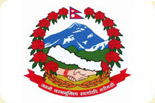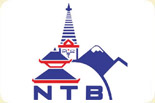Day 01: Arrival in Kathmandu airport (1350m) and transfer to hotel.
Day 02: Sight Seeing Patan, Bhaktapur and Nagarkot. Overnight at Nagarkot.
Drive to Patan City:
The ancient city Patan is Lalitpur meaning, city of beauty. It is indeed a city of beauty ad grace and is planned on a circular format with Buddhist stupas at each of the four points of the compass. The city is three Km south east from Kathmandu across the Bagmati river. The city is full of Buddhist monuments and Hindu temples with fine bronze gateway, guardian deities and wonderful caving. Noted for its craftmen and metal workers, it is also known as the city of artists. The city is bellived to have been built during the reign of Vira Dev in A.D 299.
Patan Durbar Square, Krishna temple, Hiranya Varna Mahavihar, Kumbeheshwar, Jagate Naraya, Mahaboudda, Rudra Varna Mahavihar, Ashoka Stupas, Machhendranat Temple, Tibetian camp are main attraction of Patan city.
Drive to Bhaktapur city: 30 minute east from Patan city.
Bhaktapur city is museum of medivedual art and architecture with many fine example of sculpture, woodcarving and colossal pagoda temples consecrated to different gods and goddesses. The city is shaped like a conch shell-one of the emblems of the god Vishnu and was founded by Kind Ananda Beva in A.D. 889. The city is 1402m above sea level. Pottery and weaving are its major traditional industries. The city lies fifteen kilometer to the east of Kathmadu.
Sidda Pokhari (lake), Royal palace, The lion gate, The golden gate, The palace of Fifty Five Windows, The picture gallery, The statue of King Bhupatindra Malla, Bastala Temple, The Pashupati Tempe, Nyatapola Temple, Bhairab Nath Temple, Dattatraya Temple, Mayur Jhyal (Peacock windows) etc are main attraction here.
Drive to Natarkot for Mountain views 16Km east from Bhaktapur.
Nagarkot 32 kilometer east of Kathmandu, is one of the most scenic spots in Bhaktapur district and is renowned for its spectacular sunrise view of the Himalaya when the weather is clear. Visitors often travel to Nagarkot from Kathmandu to spend the night so that they can be there for the breathtaking sunrise. Nagarkot has acquired famous as one of the best spots to view Mount Everest as well as other snow-topped peaks of the Himalayan range of eastern Nepal. It also offers and excellent view of the Indrawati river valley to the east. With an elevation of 2195 meter, Nagarkot also offers a panoramic view of the Valley and is described by visitors as a place whose beauty endures year round.
Day 03: Drive Nagarkot to Changu Narayan Temple - Drive to Namobuddha Stupa -Back to Kathmandu : O/N at Kathmandu.
Changu Narayan 2075m is a pagoda-style Hindu temple dedicated to Vishnu in his incarnation as Narayan. It is one of the oldest temples in Nepal, but because it is a bit off the beaten track, it is seldom visited by tourists. This temple is quite beautiful, especially the repoussé doors and front facade, Changu Narayan is not known for its temple but for the stone statues, bas-relief carvings, and inscriptions that are scattered around the temple courtyard.
It is Originally built in the early 4th century during the Licchavi dynasty, Changu Narayan was rebuilt around 1700 after the temple was destroyed by a fire. All of the stone carvings in the temple courtyard were done between the 5th and 13th century, which makes this one of the single-greatest concentrations of ancient art in Nepal. Facing the entrance to the main temple is a large stone statue of a kneeling Garuda, upon whom Vishnu is said to ride. This statue dates from the 5th century. Behind the statue is an inscription stone from the same century that has provided a great deal of information about the Licchavi period in the Kathmandu Valley's history. Also in front of the temple's main entrance, in an ornate little cage, are small statues of King Bupathindra Malla and his queen.
To the right of the temple entrance, there are several smaller shrines and a platform with only a carved stone atop it. This bas-relief carving, which has had its upper-right corner broken off, depicts two different incarnations of Vishnu. At the bottom of the stone, Vishnu is shown reclining on a bed of snakes, the same pose that is depicted in the large statue of Budhanilkantha. Above this, a 10-headed standing Vishnu is depicted. The detail in this 5th- or 6th-century stone carving is amazing.
Near the famous double Vishnu is a stone depicting another incarnation of Vishnu, the half-man, half-lion Narsimha. In the northeast corner of the courtyard is an important bas-relief that you might recognize. It depicts Vishnu riding on the back of Garuda and is the model for the image on the back of the Nepali 10-rupee note.
Namo Buddha Stupa The supreme sacred place known as Namo Buddha is located in the mountains about 2 ½ hours from Kathmandu. It is one of the most important Buddhist pilgrimage sites in Nepal and one of the holiest in the world. It is known as the place where the Buddha, in a previous life as a prince, gave his body to a starving tigress and her cubs. There is a very old temple in the village of Namo Buddha, located below Thrangu Rinpoche’s land, which sits on the top of the mountain. Several lamas have determined that the actual site where the Buddha gave his body is actually on Thrangu Rinpoche’s property near the retreat center. There is a cave with statues of the prince, the tigress and the cubs on this site. Namo Buddha is otherwise known by Tibetans and people of the Himalayan regions as “Takmo Lu Jin”, which is literally “Tigress Body Generosity”. Drive to Kathmandu.
Day 04: Visit Pashupatinatha, Bouddanatha & Swyambhunatha (Monkey Tempe) and Kathmandu Durbar Square: O/ at hotel.
Pashupatinath Temple:
After breakfast drive to Pashupatinath Hindu Temple 28 kilometer North-west from Nagarkot is the holiest of all the Shiva shrines in Nepal and is the above of Lord Pashupatinath, the guardian spirit of Nepal. The temple of Pashupatinath is a large double-roofted pagoda of brass and gilt; the gateway is plated with silver. It stands on the western bank of the Bagmati about five kilometer north-east of Kathamndu and contains the sacred linga of Lord Shiva. Before the temple stands an enormous gift filguree of the bull Nandi, the mount of Shiva, flanked by a golden trident. There is a crematorium outside the temple by the side of the wide but shallow river and the wood surroundings are dotted with small shrines. On the occasion of the annual festival of Maha Shivaratri (February / March), the temple is visited by thousand of devotees including a large number of pilgrims from India. The temple is also the site of a number of other festival and ritual taking laces throughout the year.
Bouddanath: This colossal stupa, one of the biggest in the wourld, is situated 2 kilometer north from Pashupatinath. The splendid some of Bouddhanath Stupa is approximately 120 ft in diameter, 1hec in width and 43m in height. Its simplicity of form is its principal feature, unique among monumental stupas in the valley in its lack of the appended five shrines of the Buddha. Some consider it represents fht Adibuddha, the first or Primordial Buddha, free of conceptual emanations. Only the steps built into it on the north side, seemingly the ladder that Sakyamuni ascended into Tushita heaven, breks its uniformity. A thick layer of whitewash coast the dome and the form of a bouble lotus depicted in saffron water colors it. This can be sponsored on various auspicious dates, and is also done annually on Dasain Purne occurring on the Full Moon in September by the Bouddhanath Area Development Committee. Bouddanath the dome, is an addes terrace with a remarkable 108 niches filed with stone sculptured deities of the Nyingmapa School's pantheon. They replace the usual five Buddha shrines in defining the content of the stupa-mandala, these images were almost certainly commissioned all at once by Sakya Zangpo in the 16th century, when the persent stupa was buit or thereafter. On the top of the Stupa, there are five symbols of Water, Eather, air, fire, earth.
Swyambhunath (Monkey Temple) 10 kilometer west from Bauddanath stupa. It is said to be two thousand years ole, making it one of the world's oldest and glorious Buddhist chaityas. The Chaitys (Stupa) which foarms the main structure is composed of a solid hemisphere of brick and earth supporting a ofty conical spire capped by apinacle of gilt copper. Pinted on the four-sided base of the spire are the al-seeing eyes of Lord Buddha. It is stand a hill as Stupa style.
O/N CULTURE MIXED FOLK DANCE WITH NEPALI DINNER.
Day 05: Drive to Everest Experience Mountain flight 30 - 40 minutes
Visit Thamel / Shopping / Airport transfer to final departure.
|









